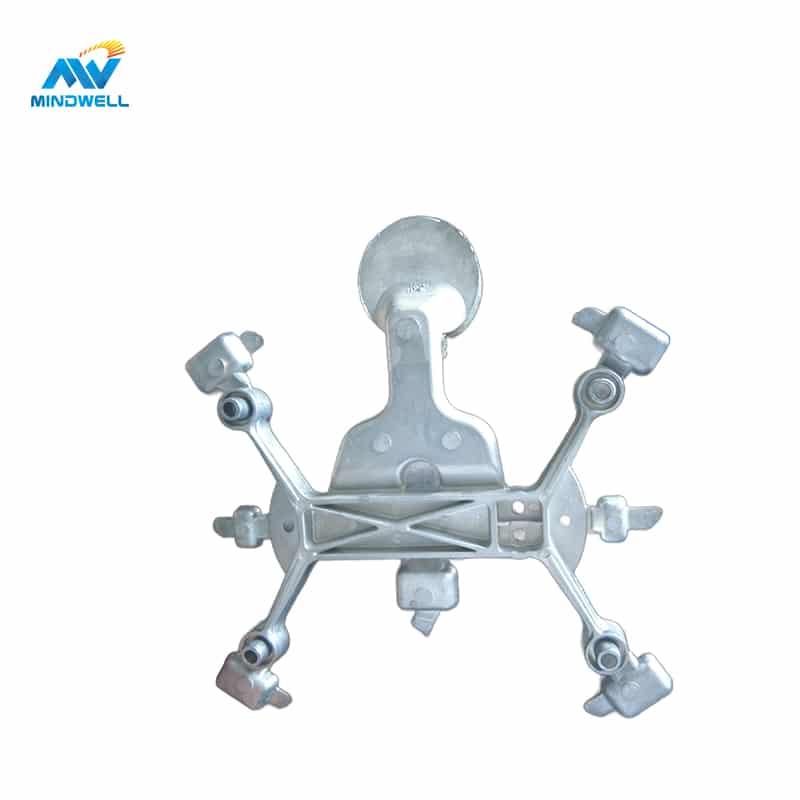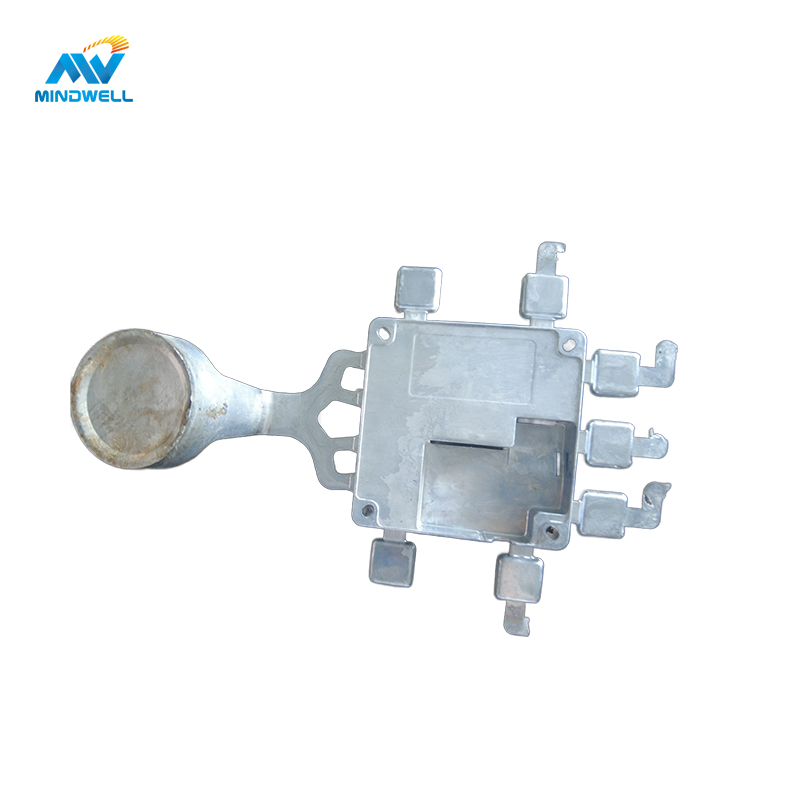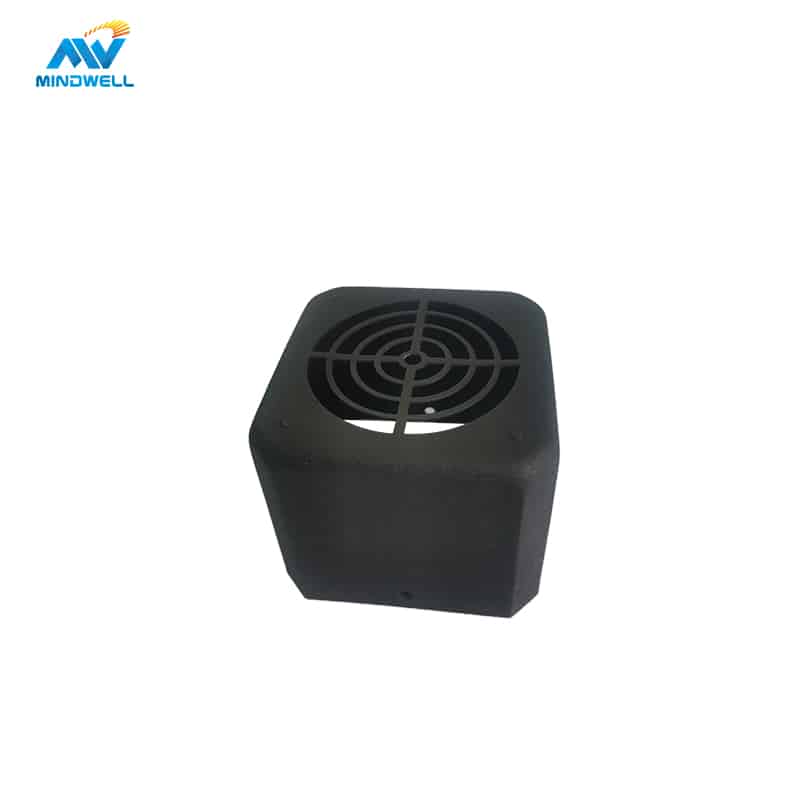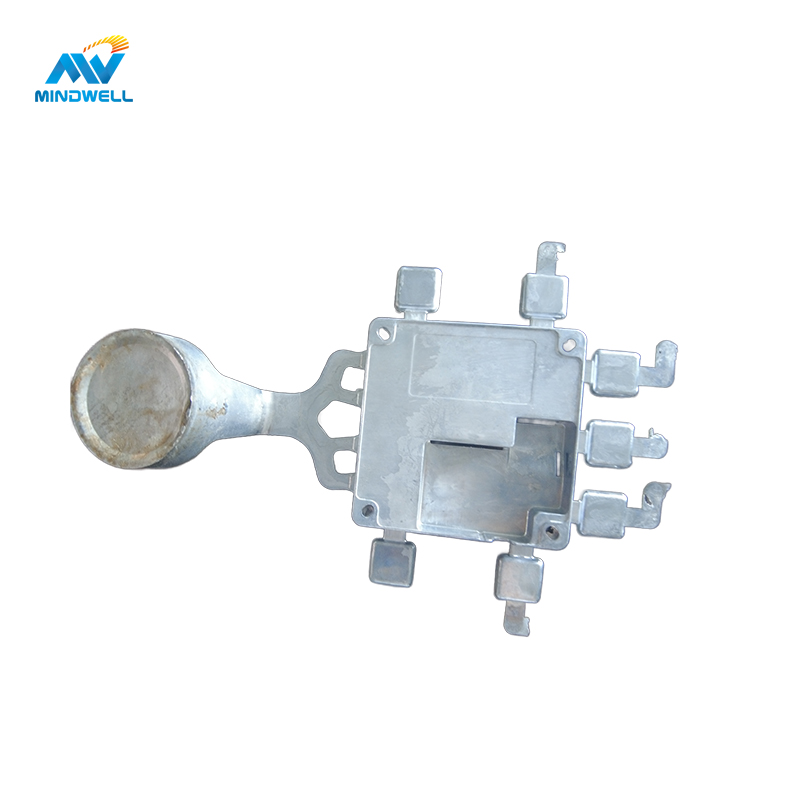CNC machining is the manufacture and processing of parts and products under computer control. Numerical control machining involves the use of computer numerical control (CNC) machine tools to make adjustments to a piece of material (i.e., a workpiece) by automatically removing excess material. Typically, the material we all work with is metal, and when the removal is complete, the finished product or part is produced. Such a process is also known as subtractive manufacturing. In order to better carry out CNC machining, computer applications are used to control the movement of machine tools. Common types of CNC machine tools include the most common milling and turning processes, followed by grinding, EDM, etc.
Features of CNC machining
- High degree of automation and very high production efficiency. Except for blank clamping, all other processing procedures can be completed by CNC machine tools. If combined with the automatic loading and unloading method, it is a basic part of the unmanned control factory.
CNC processing reduces the labor of the operator, improves the working conditions, saves on marking, multiple clamping and positioning, testing, and other processes and auxiliary operations, and effectively improves production efficiency. - Adaptability to CNC-machined objects When changing the processing object, in addition to changing the tool and solving the blank clamping method, it only needs to be reprogrammed without other complicated adjustments, which shortens the production preparation cycle.
- High processing precision and stable quality. The processing size accuracy is between d0.005-0.01mm, which is not affected by the complexity of the parts, because most of the operations are automatically completed by the machine. Therefore, the size of batch parts is increased, and position detection devices are also used on precision-controlled machine tools , to further improve the accuracy of precision CNC machining.
- CNC processing has two main features: one is that it can greatly improve processing accuracy, including processing quality accuracy and processing time error accuracy; the other is the repeatability of processing quality, which can stabilize processing quality and maintain the quality of processed parts.
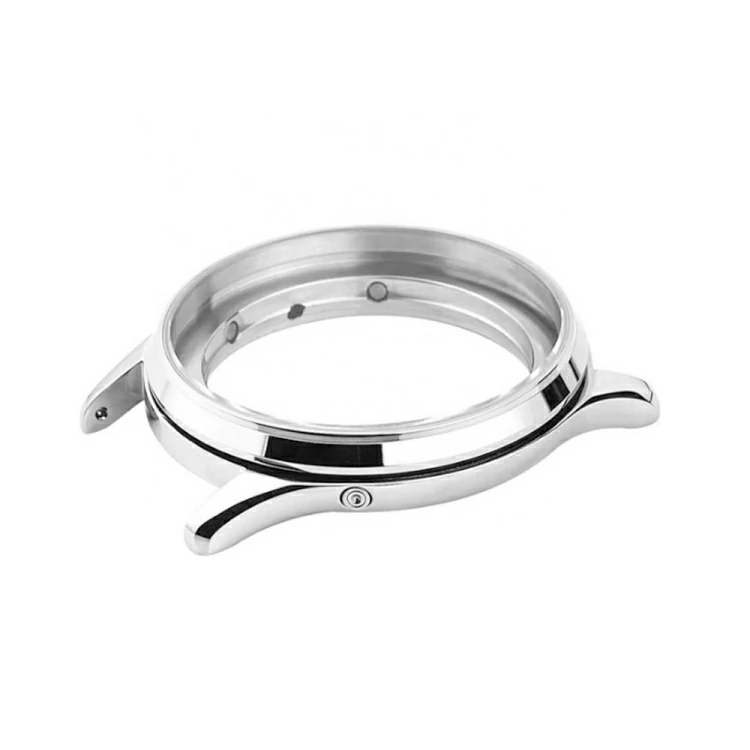
What type of machining is CNC?
According to the material and requirements of the machining workpiece, different processing methods can be selected. Understanding the common machining methods and scope of application will allow us to find the most suitable processing method for parts.
Turning
The method of machining parts with a lathe is collectively referred to as turning. Using the forming turning tool, the rotating surface can also be processed when the horizontal feed is used. Turning can also process threaded surfaces, end planes, and eccentric shafts.
The turning precision is generally IT11-IT6, and the surface roughness is 12.5-0.8μm. When finishing the car, it can reach IT6-IT5, and the roughness can reach 0.4-0.1μm. Turning has higher productivity, a smoother cutting process, and simpler tools.
Scope of application: drilling center hole, drilling, reaming, tapping, turning outer circle, boring, turning end face, turning groove, turning forming surface, turning cone surface, knurling, turning thread
Milling
Milling is a method of processing a workpiece using a rotating multi-blade tool (milling cutter) on a milling machine, and the main cutting motion is the rotation of the tool. According to the same or opposite direction of the main movement speed and the feed direction of the workpiece during milling, it can be divided into down milling and up milling.
(1) Climb milling
The horizontal component force of the milling force is the same as the feed direction of the workpiece, and there is generally a gap between the feed screw of the workpiece table and the fixed nut, so the cutting force is likely to cause the workpiece and the table to move forward together, causing the feed rate to suddenly increase, causing a knife attack.
(2) Up milling
The movement phenomenon that occurs during climbing milling can be avoided. During up-cut milling, the cutting thickness gradually increases from zero, so the cutting edge begins to experience a stage of squeezing and sliding on the cutting-hardened machined surface, which accelerates the wear of the cutting tool.
Scope of application: milling plane, milling step, milling groove, milling shaped surface, milling spiral groove, milling gear, cutting off
Planing
Planing processing generally refers to the processing method of using the planer to make reciprocating linear motions relative to the workpiece on the planer to remove excess material.
The planing precision can generally reach IT8-IT7, the surface roughness is Ra6.3-1.6μm, the planing flatness can reach 0.02/1000, and the surface roughness is 0.8-0.4μm, which is superior to the processing of large castings.
Scope of application: planing flat surfaces, planing vertical surfaces, planing step surfaces, planing right-angle grooves, planing inclined surfaces, planing dovetail grooves, planing D-shaped grooves, planing V-shaped grooves, planing curved surfaces, planing keyways in holes, planing racks, planing compound surfaces
Grinding
Grinding is a method of cutting the surface of a workpiece on a grinding machine using a high-hardness artificial grinding wheel (grinding wheel) as a tool, and its main motion is the rotation of the grinding wheel.
The grinding precision can reach IT6-IT4, and the surface roughness Ra can reach 1.25-0.01μm, even 0.1-0.008μm. Another feature of grinding is that it can process hardened metal materials, which belongs to the scope of finishing, so it is often used as the final processing procedure. According to different functions, grinding can also be divided into cylindrical grinding, inner hole grinding, flat grinding, and so on.
Scope of application: cylindrical grinding, internal grinding, surface grinding, form grinding, thread grinding, gear grinding
Drilling
The process of processing various inner holes on a drilling machine is called drilling, which is the most common method of hole processing.
The drilling precision is low, generally IT12~IT11, and the surface roughness is generally Ra5.0~6.3um. After drilling, reaming and reaming are often used for semi-finishing and finishing. The machining accuracy of reaming is generally IT9-IT6, and the surface roughness is Ra1.6-0.4μm.
Scope of application: drilling, reaming, tapping, strontium hole, scraping plane
Boring
Boring processing uses a boring machine to expand the diameter of existing holes and improve the quality of the processing method. Boring processing is mainly based on the rotary motion of the boring tool.
The boring machining precision is high, generally it is IT9-IT7, and the surface roughness is Ra6.3-0.8mm, but the production efficiency of boring machining is low.
Scope of application: machining high-precision holes, multiple holes finishing
Tooth surface processing
Gear tooth surface processing methods can be divided into two categories: forming methods and generating methods.
The machine tool used to process the tooth surface by the forming method is generally an ordinary milling machine, and the tool is a forming milling cutter, which requires two simple forming movements: tool rotation and linear movement. The commonly used machine tools for machining tooth surfaces by generating method are gear hobbing machines, gear shaping machines, etc.
Scope of application: gears, etc.
complex surface processing
The cutting process of three-dimensional curved surfaces mainly adopts the methods of profiling milling, CNC milling, or special processing methods.
Scope of application: components with complex surfaces
EDM
EDM uses the high temperature generated by the instantaneous spark discharge between the tool electrode and the workpiece electrode to erode the surface material of the workpiece to achieve machining.
Scope of application:
- Process hard, brittle, tough, soft and high-melting conductive materials;
- Processing semiconductor materials and non-conductive materials;
- Processing various types of holes, curved holes and tiny holes;
- Process various three-dimensional curved surface cavities, such as forging dies, die-casting dies, and plastic dies;
- Used for cutting, surface strengthening, engraving, printing nameplates and marks, etc.
electrolytic machining
Electrolytic machining is a method of forming and processing workpieces by using the electrochemical principle of anodic dissolution of metals in electrolytes.
The workpiece is connected to the positive pole of the DC power supply, the tool is connected to the negative pole, and a narrow gap (0.1mm ~ 0.8mm) is maintained between the two poles. The electrolyte with a certain pressure (0.5MPa-2.5MPa) flows through the gap between the two electrodes at a high speed of 15m/s-60m/s.
Scope of application: machining holes, cavities, complex surfaces, small diameter deep holes, rifling, deburring, marking, etc.
laser processing
The laser processing of the workpiece is completed by a laser processing machine. Laser processing machines are usually composed of lasers, power supplies, optical systems and mechanical systems.
Scope of application: small hole processing of diamond wire drawing dies, watch jewel bearings, porous skin of divergent air-cooled punching sheets, engine fuel injectors, aeroengine blades, etc., and cutting of various metal materials and non-metal materials.
Ultrasonic processing
Ultrasonic machining is a method of machining the workpiece by impacting the suspended abrasive in the working fluid with the end face of the tool vibrating at an ultrasonic frequency (16KHz ~ 25KHz), and polishing the surface of the workpiece by the abrasive particles.
Scope of application: Difficult-to-cut materials

CNC machining process
Compared with traditional manual machining, CNC machining is much faster. The computer code is correct and conforms to the design. The finished product has high dimensional accuracy and small error. CNC manufacturing, which can be used to manufacture end-use products and components, is usually only cost-effective in low-volume, short production runs, making it ideal for rapid prototyping. Multi-Axis CNC Machining
Multi-Axis CNC Machining
CNC milling involves removing material using rotating tools. Either the workpiece remains stationary and the tool moves onto the workpiece, or the workpiece enters the machine at a predetermined angle. The more axes of motion a machine has, the more complex and faster its forming process will be.
Three-axis CNC machining
Three-axis CNC milling remains one of the most popular and widely used machining processes. In 3-axis machining, the workpiece remains stationary and a rotating tool cuts along the x, y, z axes. This is a relatively simple form of CNC machining that can produce products with simple structures. It is not suitable for machining complex geometries or products with complex components.
Since cutting can only be done in three axes, machining speeds can also be slower than four- or five-axis CNC, as the workpiece may need to be manually repositioned to obtain the desired shape.
Four-axis CNC machining
In 4-axis CNC milling, a fourth axis is added to the motion of the cutting tool, allowing rotation about the x-axis. Now there are four axes – x-axis, y-axis, z-axis and a-axis (rotation around x-axis). Most 4-axis CNC machines also allow the workpiece to rotate, which is known as the b-axis, allowing the machine to function as both a mill and a lathe.
If you need to drill holes in the side of a part or on the curved surface of a cylinder, 4-axis CNC machining is the answer. It greatly speeds up the machining process and has high machining accuracy.
Five-axis CNC machining
Five-axis CNC milling has an extra axis of rotation compared to four-axis CNC milling. The fifth axis is rotation around the y-axis, also known as the b-axis. The workpiece can also be rotated on some machines, sometimes called a b-axis or c-axis.
Due to the high versatility of 5-axis CNC machining, it is used to manufacture complex precision parts. Such as medical components of artificial prosthetics or bones, aerospace components, titanium components, oil and gas mechanical components, military products, etc.
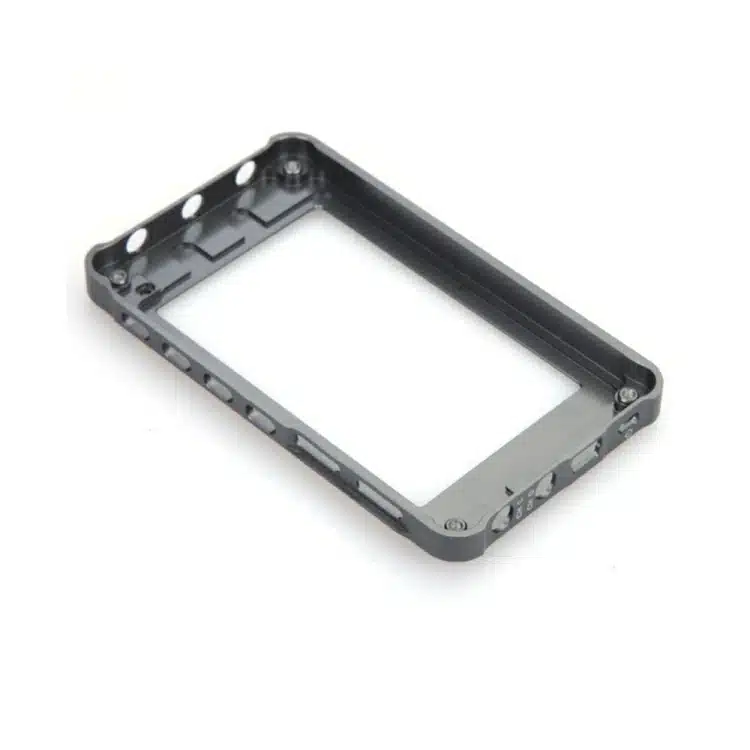
Application industry
Generally, the precision of parts processed by CNC is very high, so the parts processed by CNC are mainly used in the following industries:
- Lotnictwo i kosmonautyka
Aerospace requires components with great precision and repeatability, including turbine blades in engines, tooling used to make other components, and even combustion chambers used in rocket engines.
- Automobile and machine building
The automotive industry requires the manufacture of high-precision molds for casting components such as engine blocks or machining high-tolerance components such as pistons. The gantry machine casts clay modules for use in the design phase of the car.
- military industry
The military industry uses high-precision components with tight tolerances, including missile components, gun barrels, and more. All machined components in the military industry can benefit from the precision and speed of CNC machines.
- the medical
Medical implants are often designed to fit the shape of human organs and must be manufactured from advanced alloys. Since there are no manual machines capable of generating such shapes, CNC machines have become a necessity.
- energy
The energy industry encompasses all fields of engineering, from steam turbines to cutting-edge technologies such as nuclear fusion. Steam turbines require high-precision turbine blades to maintain the balance in the turbine, and the shape of the R&D plasma suppression cavity in nuclear fusion is very complex, manufactured with advanced materials, and requires the support of CNC machines.
With the development of mechanical processing to this day, various processing techniques have been derived following the improvement of market requirements. When you choose a machining process, you can consider many aspects: including the surface shape of the processed workpiece, dimensional accuracy, position accuracy, surface roughness, etc.
Only by choosing the most suitable processing technology can the quality and processing efficiency of the workpiece be guaranteed with the minimum investment, and the benefits generated can be maximized.
MINDWELL is engaged in Usługi obróbki CNC, has been deeply involved in the industry for many years, and has rich experience. If you have CNC processing, CNC lathe processing, or five-axis processing, including aluminum, copper, stainless steel, iron, titanium alloy, plastic, and other products, please contact us directly.


